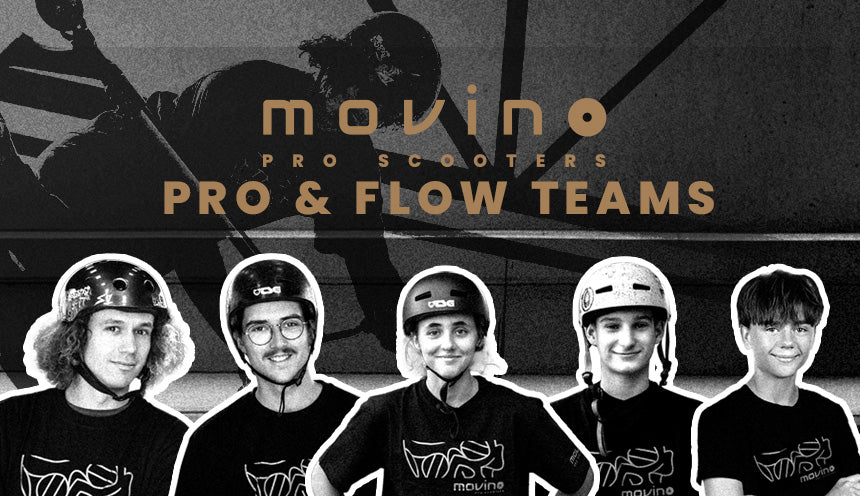Learning To Brake: 3 Skating Brake Techniques - Exercises
When rollerblading, there are several ways to brake effectively. Beginners can start with the classic brake attached to the skates, while more advanced skaters might opt for the plough stop or the T-stop techniques. Using the brake is the simplest method and is often the first technique people learn when stopping on skates. The plough stop is relatively straightforward and effective, while the T-stop is the most efficient yet challenging method.
During training, always pay attention to maintaining the correct body posture, which is essential for effective braking. For the plough stop, you need to adopt an inverted V shape, whereas the T-stop requires the ability to skate on one leg. Which braking method should you start with?
How To Brake Using the Skate Brake—the Right Way
Braking with the skate brake is a technique used by beginners and is one of the skills worth mastering in the initial lessons. The key is maintaining the correct posture. Start with your feet parallel, then move the skate with the brake forward into a scissor position. In this position, slowly and carefully lift your toes and press the brake against the ground. For better control, keep both hands in front of you as if holding handlebars. Remember, braking with the skate brake is most effective at low speeds, and the stopping distance can be quite long.

Correct Body Posture for Braking With the Skate Brake
If you’'re teaching your child or yourself how to brake using the skate brake, focus on the correct body posture. Keep your feet close together and parallel. During braking, one skate should be clearly ahead of the other, with your body weight over the back leg. This positioning makes the front leg light and easy to lift for braking. Your knees should be slightly bent, and your body should lean slightly forward. To facilitate braking, extend your arms forward.
Stationary Exercise
The first exercise you can introduce to your child is alternating leg extensions forward. Even though the brake is mounted on one skate, it’s beneficial to practise extending both legs alternately from the start. Begin with the correct position—skates should be parallel. Then, your child should alternately extend one leg forward. This exercise can be done together, whether you are skating yourself or simply accompanying your child in shoes—stand facing your child and support them by holding their hands.

Braking While Skating
After completing the initial exercises, it’s important to practise braking while skating. What are the steps involved in stopping using the brake?
- Skate at a moderate speed;
- Position the skates straight and close together;
- Slightly bend the knees and lean the body forward;
- Extend one skate forward;
- Lift the toe of the extended skate upwards and brake (this action is performed by the front skate with the brake).
A common mistake during braking is skipping the preparation stage and lifting the toes too quickly. Remember to extend the leg far forward before you start braking.
How To Properly Brake Using the Plough Technique?
Begin learning the plough braking technique by adopting an inverted V position. Keep in mind that stopping this way requires a longer braking distance. In the plough position, the toes are pointed inward, and the heels are outward. The knees should be slightly bent, and the hips pushed back. Extend your arms forward, press your shins against the tongues of the skates, and lean slightly forward. By focusing on these elements, you can successfully brake using the plough technique.

Simple Exercise To Prepare for Plough Braking:
Stand in an inverted V position, pointing your toes inward and heels outward. Spread your feet wide. Repeat the exercise several times. A common mistake for those learning plough braking is leaning their back too far backward.
T-Stop Braking
The T-Stop is the most challenging yet highly effective braking method. During a T-Stop, one skate moves straight in the direction of travel, while the other is positioned behind the heel, perpendicular to the direction of movement. Shift your body weight onto the leg moving forward. Allow the inner side of the wheels on the second skate to slide crosswise against the ground, applying pressure to the surface.
Before attempting this braking method, practise a few balance exercises.

Exercise 1
Perform this exercise in place. Stand in a basic position, bend your knees, and extend your arms forward. Shift your body weight onto one leg, position the other behind the heel at a 90-degree angle, and tilt it onto the inner edge.
Exercise 2
Practise skating on one leg and transferring your body weight. The better your balance and ability to skate on one leg, the easier it will be to execute the T-Stop brake.
Exercise 3
The final exercise is training the T-Stop braking method. Start in a skating position with your skates parallel, extend your arms forward, and shift your body weight onto the front leg. Position the other foot behind, turned 90 degrees, perpendicular to the direction of travel, and try to stop. Remember, you brake by pressing the inner edge of the rear skate’s wheels against the ground. To avoid spinning, keep your arms aligned with the direction of travel. Extending both arms forward will help.
Visit our YouTube channel for a skating course featuring braking lessons and many other tutorials. Subscribe to the channel to stay updated with new tutorials and enhance your skills!



